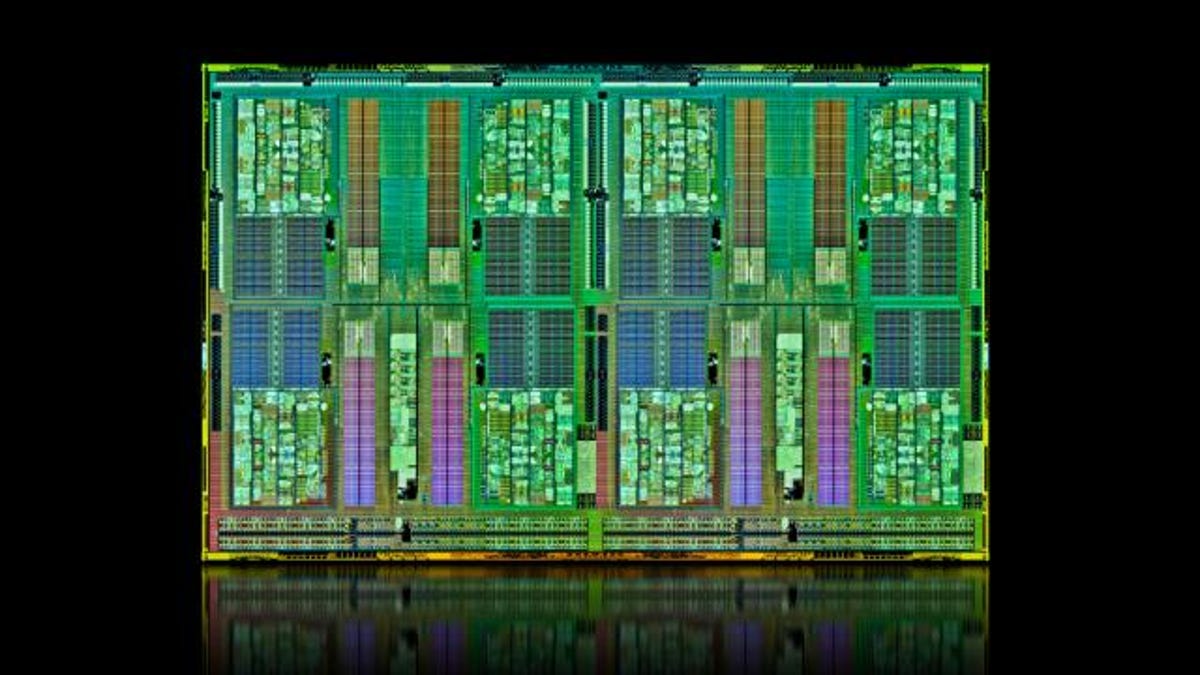AMD pushes 16-core server chip to market
The Opteron 6200 series, aka "Interlagos," carries AMD into a higher-end servers that juggle many tasks at once. Intel remains the ruler of the x86 chip roost, though.

A big number doesn't always win over the market, but it can help. And the number AMD is pinning its hopes on today is 16.
That's the notable number of cores in each of its Opteron 6200 "Interlagos" processors using the new "Bulldozer" architecture. Using an approach that helped Intel reclaim the initiative that the original Opteron stole years ago, the Opteron 6200 actually packages two silicon chips in a single housing and fit into the same socket as the earlier-generation Opteron 6100 models that reached up to 12 cores.
The chips are available now and will ship in higher-end servers from Dell, Cray, Hewlett-Packard, and more. With four Opterons, as in the Dell PowerEdge R815 reviewed by CNET sister site ZDNet UK, that means software can run 64 simultaneous threads of instructions in parallel.
All chipmakers in the industry are headed down the multicore path, an alternate route to computing power that rose to prominence after crippling waste heat and power consumption shut off the earlier avenue of turning up the clock speed. Multicore chips can be difficult to keep occupied when it comes to consumer software, but the overall approach is well suited to graphics and servers, where many tasks run in parallel.
Intel, which dominates the server market with its x86 processor family, has taken a different approach to multicore chips called hyperthreading. With it, a processor core with a bit of spare time on its hands can run a secondary thread for a boost that's often significant but that doesn't go as far as a full extra core. Intel's E7 line of Xeon processors currently has as many as 10 cores each.
Power management is still a major challenge for chipmakers. The Opteron 6200 can automatically boost the clock speed of busy cores when others are idle, though, through a technology called Turbo Core. Another mechanism called TDP Power Cap lets administrators set maximum power consumption.
Those who want tasks to run faster but who are willing to get by with fewer cores will have different options. The top-end 16-core 6282 SE runs at 2.6GHz and consumes a maximum of 140 watts. The 6276 lowers the clock speed to 2.3GHz and takes the power down to 115W. Dropping cores to 12 gets 2.6GHz and 115W; going down to 8 cores lets the chip run at 3GHz at 115W; and the farthest extreme, the quad-core Opteron 6204 hits 3.3GHz at 115W.
Except for the last model, the clock speed bumps up significantly with the Turbo Core approach. The 6282 SE, for example, can reach 3.3GHz.
Among the notable customers of the new processor is Cray, which is building a mammoth supercomputer with the AMD 16-core processors.
The Interlagos chips are accompanied by the "Valencia" models for servers with a pair of processor sockets. AMD also announced today another relative in the family code-named Zurich. These Opteron 3000 models are designed for ultra low-power servers with a single processor socket; AMD will offer models with four and eight cores that are planned for shipment in the first half of 2012.

